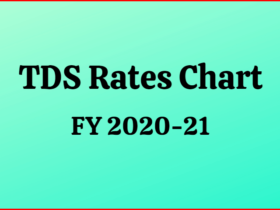What Is a Credit Card Network?
The credit card network authorizes, processes, and sets the terms of credit card transactions, as well as transfers payments between shoppers, merchants, and their respective banks.
When you look at your credit card, you may wonder why there are many company names on it. Your card can be issued by Chase, branded by Marriott, and process transactions through the Visa credit card network.
When you dip, tap, or swipe your credit card to make a purchase or enter your card number online, you are requesting that your card issuer pay the merchant. But that payment first has to go through the credit card network.
The credit card network functions in different ways, depending on how it is set up.
If the credit card network is both a network and a card issuer. The network will process and approve purchase requests.
If the credit card network is different from the card issuer. The credit card network acts as an intermediary that connects the merchant with the financial institution that issued the card for the processing and approval of the credit card transaction. Visa and MasterCard serve as middlemen.
The credit card network gives information between the merchant’s acquiring bank and an issuing bank or card issuer to decide whether you can make a purchase or No and to facilitate the purchase. Know more How The Best things to prevent credit card fraud.
How do credit card networks work?
When you use your credit card to buy something, many things are behind the scenes.
First, the merchant inserts a credit card chip (also known as an EMV) into your credit card or swipes the card into a point-of-sale machine.
The merchant’s credit card terminal talks to the credit card network to see when the transaction can be approved.
If an issuing bank in your credit card is different from the credit card network, the credit card network then talks to the issuing bank to determine whether to approve the transaction.
And then the credit card network notifies the merchant if your purchase has been approved or rejected.
What’s the difference between a credit card issuer and a credit card network?
A credit card issuer is a financial institution that gives you a credit card. When you swipe your card to buy something from a merchant, the card issuer decides whether to lend you money to buy something.
If the issuer lets the charge pass, you eventually repay the issuer for the money you borrowed – with interest.
A credit card network is a company that provides a communication system between a merchant and an issuer to complete a credit card transaction.
Example of Issuer And Networks…
- Discover and American Express are issuers and networks
- Mastercard and Visa are only credit card networks
- Capital One and Wells Fargo are only credit card issuers
Types of Credit Card Networks
1. Visa
This is a payment network only; It means, it does not issue credit cards directly to consumers, although you will see the Visa logo appearing on multiple cards to identify their association with the card’s payment network.
It also oversees the Visa Signature benefits associated with certain credit cards, such as premium rental car privileges and hotel allowances.
The visa remains the king of the mountain in the card network industry. Visa posted $ 2.1 trillion in total payment volume (TPV) in transactions of 43.2 billion during its fiscal Q2 2019, marking an 11% year-over-year (YoY) increase in transaction volume.
2. Mastercard
It is only a credit card network. But it has its own suite of card protection and benefits, such as identity theft protection and extended warranties.
MasterCard is no slouch, as it has acquired the number 2 position among the card network. MasterCard posted $ 3.9 billion in net revenue, up 9% YOY in Q1 2019.
3. American Express
American Express is a credit card network and card issuer that both issues credit cards and processes payments for cards that affect its logo. It also provides benefits such as travel insurance to the cardholder.
American Express remains a force among its peer card networks, even though it does not have the Visa or MasterCard numbers.
In 2018, American Express added 1 million new merchants to its merchant network in the US, in addition to a 9% YOY increase in its US network bill.
4. Discover
It is both a card network and a card issuer that offers benefits such as secondary rental car collision insurance.
Discover remains in fourth place behind Visa, MasterCard, and Amex. Discover saw a 10% year-over-year (YoY) increase in Q4 2018 to hit $ 99 billion in its total network volume (TNV).
5. Interlink
Interlink is Visa’s electronic fund transfer division and is primarily based in the U.S.
Operates within, but unlike a standard Visa Check Card purchase, and uses an Interlink Purchase PIN. And can receive cashback from the merchant.
6. STAR
Star Pin was one of the first networks to focus on debit, and First Data purchased the company in 2003.
The company prides itself on its innovation, such as the first process of envelope-less depositing in ATMs and the first real-time direct electronic check debit.
7. Accel
The Accel Interbank network connects more than 400,000 ATMs in all 50 states, along with some US Air Force bases worldwide.
8. Interac
Interac is the primary Canadian debit card system and thrives there because other traditional providers, such as Visa and MasterCard, rarely provide cards in the nation.
There are over 59,000 automated teller machines that can be accessed via the Interac network in Canada, and more than 450,000 merchant locations can accept Interac debit payments.
9. Visa ReadyLink
The service allows Visa cardholders to quickly add cash to their prepaid accounts. Retailers such as Safeway and 7-Eleven make ReadyLink available to customers.
10. PULSE
Discover owns PULSE, which operates an interbank network for over 4,400 financial institutions and the 380,000 ATMs in the U.S. The 2019 PULSE saw, an 11% YoY increase to reach $ 47.1 billion in volume.
READ ALSO : How to Transfer Money From One Bank to Another
READ ALSO : What Is Interest? And How Does Interest Work?









